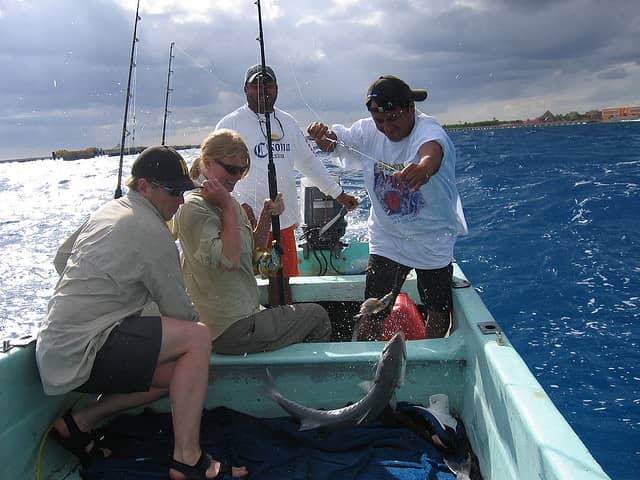Ancient Fishing Area in Mexico Becomes Modern Fly Fishing Hot Spot
OutdoorHub Reporters 06.21.12

Anglers along the Yucatán Peninsula’s coast in southeastern Mexico are in an ideal location if they are looking for work in the tourist fishing industry. The peninsula has been a steady source of fish for sustenance and trade for nearly two millennia. Now, in addition to sustenance fishing, native anglers are taking advantage of the available sport fishing opportunities by selling guided fishing tours and working a humble commercial fishing industry.
In Punta Allen, on the eastern coast of the Yucatán, there are less than 500 inhabitants. Of those, 60 to 70 men work as guides for anglers for at least part of the fishing season, according to the New York Times.
Dick Cameron, the owner of a fly-fishing lodge in Punta Allen, the Palometa Club, attributes the availability of these jobs to locals to Jan Isley, a renowned Florida Keys fishing guide. Cameron said it is was not uncommon for guides from the Florida Keys to be airlifted to some saltwater destinations to lead fishing trips. Isley recognized the potential of local lobstermen as fly-fishing guides in the 1980s. “He understood that these men are out on the water all the time and know where the fish are,” Cameron said of Isley.
Gerardo Velasquez, one of 14 guides for the Palometa Club said “there are three good jobs you can find in Punta Allen,” in an interview with the New York Times. “Lobster fishing, eco-guiding, and guiding fly fishermen. Guiding fishermen pays better than guiding eco-tourists, and it’s fun. I’d say that lobster fishing is easier than guiding, especially if you’re trying to catch permit. To be a good permit guide, you need lots of passion and patience. It’s a hard game.”
Anglers catch mostly bonefish, tarpon, lobster and permit, a short but tall and flat fish found in the Atlantic between Massachusetts and Brazil. A spiny lobster season runs from July to February, while the prime sport fishing season is from March to June.
Commercial lobster season in Ascension Bay is significantly different than its American counterpart along the coast of Maine. Small “houses” are placed two to 60 feet deep in the water to provide shelter along the sandy bay. Lobsters are attracted there and anglers free dive down to collect the lobsters gathered in the houses.
Cameron compared the commercial fishing situation in this area to commercial fishing in Alaska from his experience. He said that the commercial fishing industry complements sport fishing efforts and does not compete with them.

